Strong governance is essential to a thriving Catholic school, yet boards everywhere face the same question: Where does governance end and operations begin?
It’s one of the most consistent challenges we see in our work. Board members bring passion and expertise; school leaders bring mission-driven, day-to-day experience. Without shared clarity, even the best intentions can blur roles and create confusion.
And your school is not alone. Nearly every board we support navigates this same tension, which makes sense—Catholic school boards are filled with people who care deeply, and the line between oversight and management isn’t always obvious.
We recently facilitated a governance–operations role-play with a Catholic high school board, and the conversation was so productive that it inspired this post. Below, we outline why this challenge is so common, how boards and school leaders can address it together, and a simple exercise any board can use to build confidence around their roles.
If your board has ever wondered, “Is this ours to solve?” you’re in good company—and with the right tools, this is a challenge you can absolutely overcome.
Why This Challenge Is So Common in Catholic Schools
Catholic schools differ from many independent or charter school governance models:
- Boards are volunteer-based, with members who care deeply about the school and want to help in practical ways.
- Resources are limited, so board members often feel compelled to “jump in” operationally.
- Roles vary widely—from advisory boards, to boards of limited jurisdiction, to boards of specified jurisdiction—each with different canonical and diocesan parameters.
- Relationships matter deeply. Board members often have children, history, or parish ties to the school, making the line between objective governance and personal experience more difficult to hold.
- Mission-driven environments create urgency. When enrollment dips, finances tighten, or culture challenges arise, it can be tempting for everyone to step in everywhere.
This is not failure.
This is normal.
The key is building the capacity and shared discipline to respond well.
How Boards Can Approach the Governance–Operations Challenge
- Start With Clarity About the Board’s Purpose
Board members should have a common understanding of their jurisdiction. In most Catholic schools, the board’s primary responsibilities include:
- Mission fidelity
- Strategic direction
- Financial oversight
- Policy development
- Advancement and resource stewardship
- Hiring, supporting, and evaluating the school leader
This clarity alone resolves a significant percentage of role-confusion issues.
- Embrace the “Nose In, Fingers Out” Principle
Boards should seek information broadly—finance, academics, enrollment, facilities—but remain disciplined about not managing the day-to-day decisions, processes, or personnel involved.
Curiosity is healthy.
Intervention is not.
- School Leaders Should Proactively Communicate
Principals and presidents play a major role in keeping governance healthy. Leaders should:
- Provide the board with high-level information
- Explain the rationale behind decisions
- Offer options when board input is needed
- Clarify which matters are operational and therefore off the board’s plate
A principal empowered to lead—and a board confident in that leadership—is the strongest combination.
- Revisit Roles Regularly
Especially in seasons of stress (budget season, leadership transition, enrollment challenges), boards should revisit:
- Committee charters
- Board bylaws
- Lines of authority
Role clarity is not a one-time achievement—it’s a discipline that must be tended.
You’re Not Alone — and You Can Get This Right
Catholic school boards rarely struggle because of a lack of commitment—they struggle because governance requires a clarity of role that mission-driven teams don’t always pause to articulate. One of the most effective tools we’ve used with boards is a sorting exercise that distinguishes governance from operations in a concrete, practical way. The insights it produces are meaningful.
We’ve prepared a downloadable version for boards ready to begin this conversation. And if your board is looking to build a more disciplined, future-focused governance practice, we’d welcome a deeper conversation about how we can support that work.
- Megan Famular

